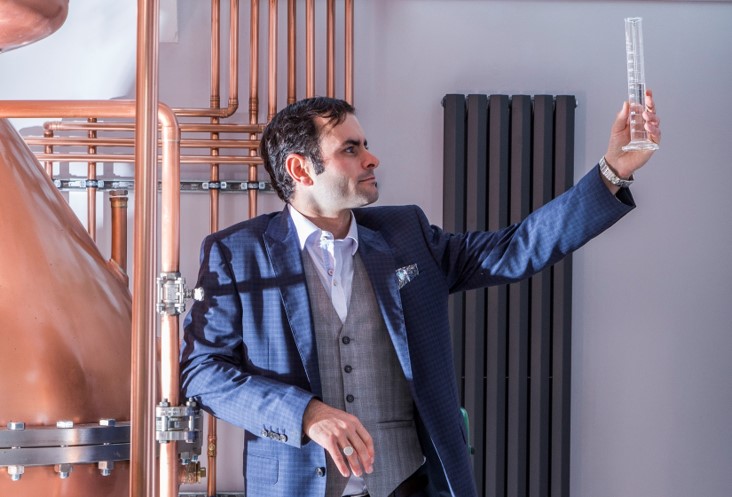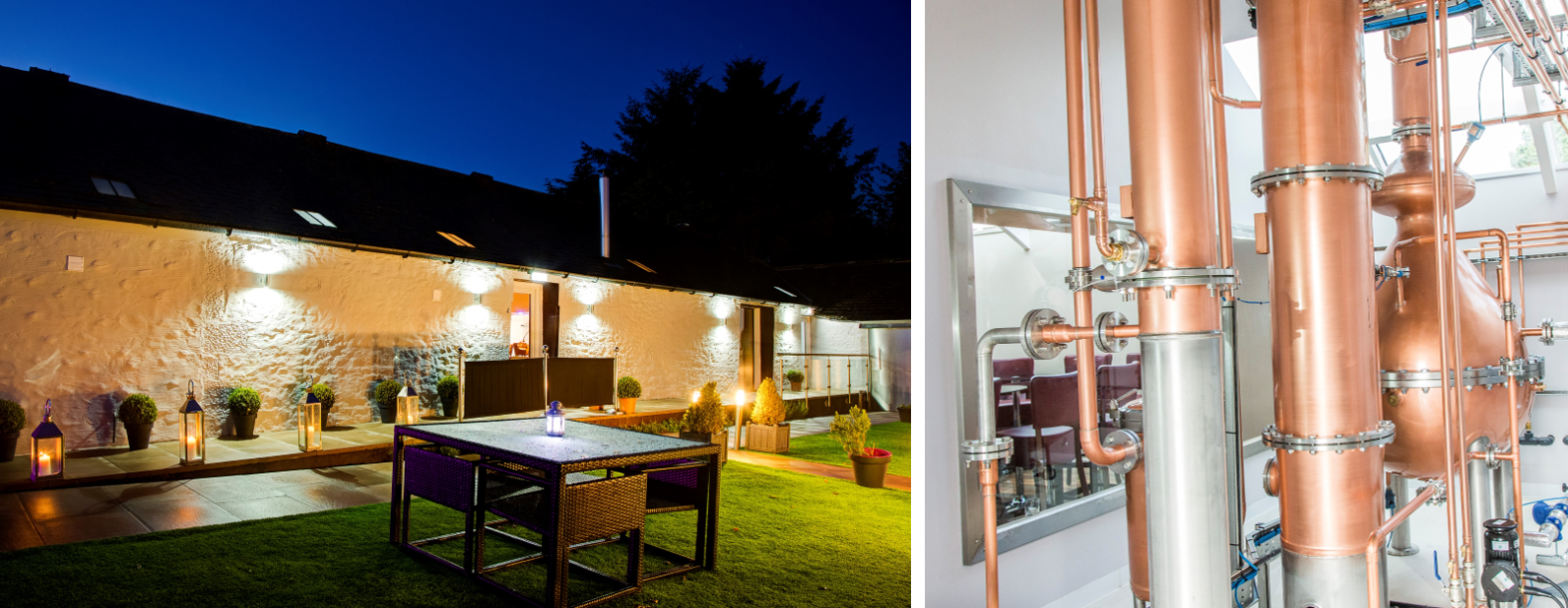|
What did you do before creating your distillery and Oro Gin?
Before starting the Oro Distilling Co with my mum and dad I was a chemical biology student finishing my master’s in chemistry. I was offered a PhD in Bio-physical Chemistry; however, I just couldn’t see myself continuing in this direction for the rest of my life. To be honest my heart just wasn’t there anymore in this field of Science. My mum is a chef and psychologist and my father had a successful wholesale business including import and export of dry goods and alcohols. As a family we decided on a career change. What made you decide to create your distillery and Oro Gin? With the PhD not being something I wanted to carry out for another 5 years, I spoke with my mum, Jacquie, and said that I didn’t want to continue with this career direction. She replied, “What would you like to do?”, I replied, “Well I would like to make gin.” She then sent me out of the house to play some golf and have a think about this choice. When I returned from my round of golf, I walked in and mum said, “right, I have found a MSc in Brewing and Distilling at Heriot Watt University and 5 apartments across Edinburgh. I have spoken to the Head of Department and he said my credentials are fine, the only issue is the course starts in two weeks…”. Enrolment happened straight away and then we said, “Ok, time to phone dad as he needs to fly to Edinburgh tomorrow to look at these apartments”. The whole process was a whirlwind career change. What is the inspiration behind Oro Gin? Oro was designed using this in-depth organic chemistry knowledge and Jacquie’s experienced and refined chef’s palate. Once we spoke at length about flavour profiles and balance, I went away and designed it theoretically looking at chemical compounds found within botanicals and how variation of concentration affects flavour threshold. My poor mum, I asked her about sourcing the botanicals as the list cleared 500 different botanicals from around the globe… amazingly she found all of them, henceforth, we created the nickname for mum – “The Source-eress”. How did you get from the idea to the finish products? The theoretical design of Oro, whilst in the labs of Heriot Watt, was in fact Recipe #1 and Oro V was Recipe #5 (Roman numeral V). We had the “terrible” job of sampling 28 variations and in blind taste panels, Oro and Oro V were selected as finalists. Then using a blind sample panel of 500 people we received the unbelievable results of 250 votes a piece. Thus as a family we decided to launch both, as they very much hit different parts of the palate and can be used in contrasting cocktails. Can you tell us more about the distilery? The distillery is quite a different one as we have gone for a 100% copper bespoke designed and hand-built Bennet Style Still from Italy (yes it was over a year late, but now its running it is truly a remarkable distilling system). We have a rectifying column and infusion basket, so we can distil a huge range of products from rums right through to floral and delicate spirits. Can you tell us more about the distillation process and botanicals? For distilling Oro and V we macerate our blend of 15 and 14 botanicals respectively over a 24 hour period. These botanicals include Macedonian Juniper (piney with soft citrus notes), Moroccan/ Italian blend of Coriander, Cassia, Cinnamon from Sri Lanka, Guatemalan Malabar Cardamom (this is bright and fresh), Liquorice, Fennel, angelica root, Brazilian Pink Pepper (Oro), Spanish Orange and Lemon, Spanish Almonds, Thai Lemongrass (Oro), Orris root, French Lavender (Oro V) and a very secret rare botanical. Once macerated we slow distil them both. We don’t use the term “slow distil” for marketing, in fact, we run the equipment over a longer period of time 15-17 hours, compared to 7-9 hours, we get a better differentiation of flavour fractions. This means each flavour profile can be more defined. These are all collected together in a tank and then diluted with demineralised water to bottle strength – 43%. We use demineralised water for consistency - Scottish water is wonderfully soft but demineralised water ensures a minimum concentration of ions, such as, Calcium hydrogen carbonate. These ions interact with flavour compounds and can affect final flavour. Instead of having to constantly test the water table for fluctuations in ions we strip them via demineralisation. What can people expect and experience if they visit the distillery for a tour/tasting? The Distillery at Dalton is more than just a gin distillery, it is a complete site and a haven for tourists and the local community alike. We have a tapas bar attached to the distillery that serves over 100 gins from around the globe, plus wines, beers, other spirits. As a team we consist of three distillers behind the bar, offering advice on all gins and drinks. With every drink you purchase we offer a complementary tapa that is a fusion between Scotland and Spain. We offer tours which last an hour and are with a distiller (rather than a tour guide) and at the end of the tour we present the 'science pour'. This is a pour using explanations of differing density as to why you can create a fresher and brighter gin and tonic. The tour delves into the history of gin, the history of our family, then into the science of botanicals - this is a time where we interact and run through the flavour profiles with botanicals. Finally we visit our state of the art bottling line (the labelling system is the impressive part). We also offer a master tour, which is with the Head distiller and we spend over 2 and half hours discussing all things gin. On top of the standard tour we taste many creations from the lab and discuss the scientific extraction of flavour. This is a very in-depth tour with Ray Jnr and involves discussion on a more chemical nature, aimed at gin super enthusiasts or industry members. What have been the biggest challenges so far? Our biggest challenge is standing out in a crowded market. There are many fantastic gins on the market and equally there are many pseudo-gins, by that I mean gins that aren’t predominantly juniper-led and thus are not 'gin' by definition. This is a discussion for another day! What have been the biggest achievements so far? Our biggest achievement is winning 10 international awards in our first 15 months of production. These awards range from IWSC, World Gin awards and San Francisco. Through these awards we have been able to differentiate from others within the busy gin market. One of my favourite moments was successfully exporting our first pallet of gin to Spain and in doing so, entering the Spanish market. How would you describe your gins in 3 words? Classical, smooth, exceptional What's your favourite way to drink your gins? Well some days you just can’t beat a classic gin and tonic. We recommend a Mediterranean tonic with a garnish of orange peel. Jacquie prefers an Oro V with Mediterranean tonic and in fact no garnish and not too much ice - a purist! My absolute favourite is a Negroni. This consists of Oro, a wonderful Vermouth (like Antica Formula Carpano), a dash of Campari and a drop of our own bitters. What gins would you always have on your gin shelf (other than your own of course!)? Well I am a big fan of Tanqueray 10 Gin, No 3 Gin, Cotswolds and Ki No Bi and these are my favourites, I very much love classical style gins and then Ki No Bi is so delicate and intriguing on the palate. What's next for Oro - any exciting plans? Our Rum has entered its second year of ageing and we will be releasing a single cask one-year old limited edition this year and moving forward a six-month aged rum and then a 2+ year. We have The Lab Collection (TLC), which will create a vintage in gin - these will be limited releases over the year that follow certain events and then never to be repeated. Thus, creating a style of vintage within gin. Something a bit different. Also Read...
Comments are closed.
|




 RSS Feed
RSS Feed


